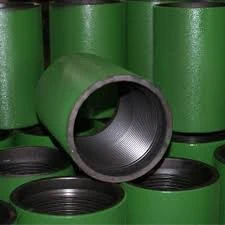- Afrikaans
- Albanian
- Amharic
- Arabic
- Armenian
- Azerbaijani
- Basque
- Belarusian
- Bengali
- Bosnian
- Bulgarian
- Catalan
- Cebuano
- Corsican
- Croatian
- Czech
- Danish
- Dutch
- English
- Esperanto
- Estonian
- Finnish
- French
- Frisian
- Galician
- Georgian
- German
- Greek
- Gujarati
- Haitian Creole
- hausa
- hawaiian
- Hebrew
- Hindi
- Miao
- Hungarian
- Icelandic
- igbo
- Indonesian
- irish
- Italian
- Japanese
- Javanese
- Kannada
- kazakh
- Khmer
- Rwandese
- Korean
- Kurdish
- Kyrgyz
- Lao
- Latin
- Latvian
- Lithuanian
- Luxembourgish
- Macedonian
- Malgashi
- Malay
- Malayalam
- Maltese
- Maori
- Marathi
- Mongolian
- Myanmar
- Nepali
- Norwegian
- Norwegian
- Occitan
- Pashto
- Persian
- Polish
- Portuguese
- Punjabi
- Romanian
- Russian
- Samoan
- Scottish Gaelic
- Serbian
- Sesotho
- Shona
- Sindhi
- Sinhala
- Slovak
- Slovenian
- Somali
- Spanish
- Sundanese
- Swahili
- Swedish
- Tagalog
- Tajik
- Tamil
- Tatar
- Telugu
- Thai
- Turkish
- Turkmen
- Ukrainian
- Urdu
- Uighur
- Uzbek
- Vietnamese
- Welsh
- Bantu
- Yiddish
- Yoruba
- Zulu
coupling tube fitting
Understanding Coupling Tube Fittings An Essential Component in Fluid Systems
Coupling tube fittings are critical components utilized in various fluid transfer applications across multiple industries, including automotive, aerospace, chemical processing, and medical sectors. With the demand for safety, reliability, and efficiency in these sectors continuously on the rise, the importance of coupling tube fittings cannot be overstated. This article explores what coupling tube fittings are, their types, applications, and key considerations during selection.
What are Coupling Tube Fittings?
Coupling tube fittings are mechanical devices designed to connect two segments of tubing or piping, allowing for the seamless flow of liquids or gases. These fittings serve as intermediaries between tubes, ensuring a secure and leak-proof connection. The primary function of a coupling fitting is to join tubing pieces without necessitating the use of additional tools, which can simplify assembly and maintenance tasks.
Types of Coupling Tube Fittings
Coupling tube fittings come in various designs and configurations to cater to the diverse needs of different applications. Here are some common types
1. Compression Fittings These fittings are popular in water supply and gas applications. They work by compressing a ring (ferrule) against the tubing, creating a tight seal that can withstand high pressures.
2. Push-to-Connect Fittings As the name suggests, these fittings allow for quick and easy connection and disconnection of tubing. They are widely used in pneumatic systems, simplifying the maintenance process without the need for tools.
3. Barbed Fittings Barbed fittings have raised ridges that help secure tubing tightly in place. They are typically used with flexible plastic or rubber tubing and are common in situations involving low-pressure fluid transport.
4. Flare Fittings These fittings are characterized by a conical (flare) end that connects with a matching flared tube. Flare fittings are designed for high-pressure applications, making them ideal for refrigerant lines in HVAC systems.
5. Welded Fittings In applications requiring a permanent joint, welded fittings are the best choice. They involve fusing the fitting and tubing together using heat, creating a robust connection that is resistant to leaks.
coupling tube fitting

Applications of Coupling Tube Fittings
Coupling tube fittings find extensive applications across industries. In automotive manufacturing, they facilitate the connection of fuel lines, brake lines, and coolant hoses, ensuring efficient and safe fluid transfer. The chemical processing industry relies on these fittings to transport corrosive substances, thanks to specialized materials such as stainless steel and plastic variants that resist chemical degradation.
In the medical field, coupling tube fittings are critical in equipment such as intravenous (IV) systems and anesthetic machines. Here, ensuring a secure and sterile connection is paramount. Additionally, in aerospace, these fittings are engineered to withstand extreme conditions, providing reliable connections in fuel systems and pressurized environments.
Key Considerations in Selecting Coupling Tube Fittings
When choosing coupling tube fittings for a specific application, several factors must be considered
1. Material Compatibility The material of the fitting should be compatible with the fluids being transported. For example, corrosive substances may require fittings made from brass, stainless steel, or specialized plastics.
2. Pressure and Temperature Ratings It's essential to select fittings that can withstand the operating pressure and temperature of the environment in which they will be used. Exceeding these ratings can lead to failures and leaks.
3. Size and Compatibility Ensure that the fittings match the size and type of tubing being used. Mismatched sizes can result in improper seals, leading to leaks.
4. Ease of Installation Depending on the application, opting for push-to-connect fittings or compression fittings may offer significant advantages in terms of ease of assembly and disassembly.
Conclusion
In summary, coupling tube fittings are vital components in fluid systems, ensuring the safe and effective transfer of liquids and gases across various industrial applications. Understanding the different types, their respective uses, and the critical factors influencing selection will help engineers and technicians choose the right fittings for their specific needs. As industries evolve and the demand for precision and reliability increases, coupling tube fittings will continue to play an essential role in ensuring operational efficiency and safety in fluid transfer systems.
-
Tubing Pup Joints: Essential Components for Oil and Gas OperationsNewsJul.10,2025
-
Pup Joints: Essential Components for Reliable Drilling OperationsNewsJul.10,2025
-
Pipe Couplings: Connecting Your World EfficientlyNewsJul.10,2025
-
Mastering Oilfield Operations with Quality Tubing and CasingNewsJul.10,2025
-
High-Quality Casing Couplings for Every NeedNewsJul.10,2025
-
Boost Your Drilling Efficiency with Premium Crossover Tools & Seating NipplesNewsJul.10,2025







